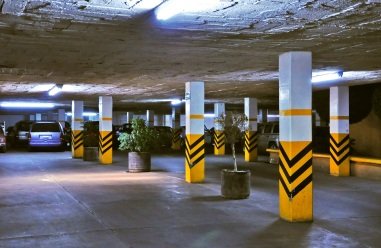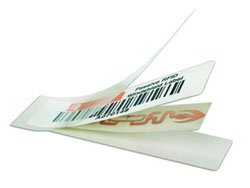Long-Range RFID Systems Control Vehicle Entry and Exit
 From a parking garage in the basement of a skyscraper in China, to a gated residential community in Boca Raton, Florida, to busy parking lots in one of the oldest private universities in southern California, long-range RFID (radio frequency identification) systems are decreasing vehicle entry and exit times (hands free for safety), restricting access to authorized parkers only, and saving plenty of time and money for owners and customers alike.
From a parking garage in the basement of a skyscraper in China, to a gated residential community in Boca Raton, Florida, to busy parking lots in one of the oldest private universities in southern California, long-range RFID (radio frequency identification) systems are decreasing vehicle entry and exit times (hands free for safety), restricting access to authorized parkers only, and saving plenty of time and money for owners and customers alike.
These systems are installed in commercial and corporate parking areas, gated communities, airport and university parking structures, and hospital lots used by doctors and staff.
In the most basic terms, RFID wireless technology can be used for automatic identification of tags attached to an object.
Low frequency systems operate in short ranges while high frequency systems have longer ranges.
Higher frequencies allow increased data transmission rates, which means that an ID tag can be read much faster. Higher frequencies also allow higher rates of speed for moving vehicles as the ID tag is being identified.
And the semi-passive RFID tags used in these systems require no startup time when approaching the reader, and offer life spans approaching 10 years.
Equipped with batteries to keep the tag "awake," the semi-passive name means those batteries just power the electronic processing components and are not used for transmission. One of the pioneers in the development of long-range RFID, a company called TagMaster (headquartered in Stockholm, Sweden, with a North American subsidiary in Tacoma, Washington) has developed a number of systems operating in the 2.45 GHz band. This operating frequency, coupled with low output power, ensures that these systems can be installed worldwide without a license.
One of the pioneers in the development of long-range RFID, a company called TagMaster (headquartered in Stockholm, Sweden, with a North American subsidiary in Tacoma, Washington) has developed a number of systems operating in the 2.45 GHz band. This operating frequency, coupled with low output power, ensures that these systems can be installed worldwide without a license.
The newest generation of long-range RFID readers has a read-range between 3 and 12 meters (approximately 10 to 40 feet), meaning that vehicles don't have to stop when entering parking structures.
Safety is enhanced and vehicle entry and exit time is decreased, especially during peak hours. Parking customers can stay inside their locked vehicles with no need to roll down the window, punch a keypad or swipe a card. And vehicle theft is minimized as the ID tag can be removed from the holder during parking hours.
For the operator of the parking structure or entry gate, records are kept of each entry and exit, customer satisfaction increases since traffic moves more quickly, and parking fees can be charged automatically without manned booths. And the environmental impact is limited as vehicles reduce fuel consumption with less stopping and waiting.
Fully protected from the environment with an enclosure, these compact readers can be installed outdoors without any problems.
The hardware and software for each system can be customized based on the location and needs of the operator. Software code is written on an open source Linux platform, offering maximum customization. And new generation readers are fully compatible with older installations, meaning that the entire system won't have to be replaced.
Long-range RFID technology continues to mature, offering more and more cost-effective solutions for parking and other applications.
See related articles:
Follow Us On Facebook - https://www.facebook.com/TheBarcodeNews
{jcomments on}
